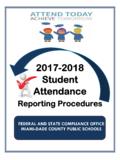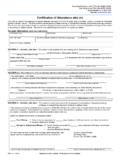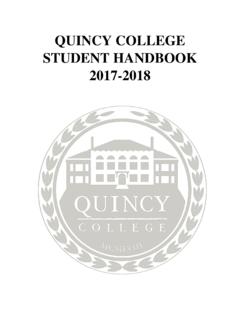Transcription of Attendance Challenge - United Way of Allegheny …
1 Attendance Challenge Planning Guide and Toolkit Created by the United Way of Allegheny County's Be There Attendance Campaign Email: Twitter: @BeTherePgh Phone: (412) 456-6833. A How-To: Attendance Challenge Introduction 2. What is an Attendance Challenge ? 3. Chronic Absence FAQ 4. Monitoring Attendance Data 5. Attendance Challenge Timeline 6. The 5 Phases of an Attendance Challenge 7-11. Roles and Responsibilities 12. Challenge Types 13. Incentive Ideas 14. What's Next? 15. Support Material Templates 16. 1. A student's Attendance in September can be United Way of Allegheny County is a strong indicator of his or her Attendance a change agent that improves lives by addressing for the rest of the school year. critical community needs. United Way creates long In September of 2014, Pittsburgh Schiller -lasting change and helps children and youth hosted an Attendance Challenge in order to encourage students to start the year off succeed, strengthens and supports families by right.
2 Students were challenged to have promoting financial stability, ensures the safety 100% Attendance for the entire month, and and well-being of vulnerable seniors, assists the students who achieved this goal would be rewarded with a field trip to Romp n'. people with disabilities, and provides information Roll roller rink. and referral sources meeting basic needs for By Pittsburgh Public Schools standards, in residents of Southwestern Pennsylvania. past years Redasha's Attendance had been considered severe. But she was determined to go on the field trip with her friends. Through the Be There Attendance Campaign, Redasha came to school every single day in United Way of Allegheny County both convenes September. If she missed the bus, she called community partners to connect key stakeholders a neighbor for a ride, or she would walk to the nearest bus stop and catch a public bus, to school Attendance work and directly supports just so she could make it to school.
3 She schools, programs, and communities with might have arrived late a couple times, but materials and initiatives that positively reinforce she made it. And coming late is much better school Attendance . than not coming at all. At the end of the month, Redasha's hard work paid off. Along with 113 of her fellow By hosting an Attendance Challenge , you are students, feeling accomplished, Redasha boarded the bus to the Romp n' Roll! motivating students to make it to school everyday, By setting a habit of getting to school every which is the first step towards building a habit of single day, Redasha's Attendance continued great Attendance ! to improve. 2. This toolkit is a step-by-step guide to planning and executing an Attendance Challenge . An Attendance Challenge is . an opportunity to Challenge students to come to school everyday for a set period of time and reward them for their achievement! Students respond well to positive recognition. Let's be proactive instead of reactive!
4 Be There constructed this toolkit so every school and organization in Allegheny County can hold its very own Attendance Challenge . By outlining each step, providing checklists & agendas, and creating other support materials, we want you to use this toolkit as a guide to implement a successful Attendance Challenge to celebrate good Attendance with your students! 3. Chronic Absence FAQ. Q: What is chronic absenteeism? A: Chronic absence is defined as missing 10% or more of a school year. Think about it this way: There are 180 days in a school year Missing 18 days a year is 10%. Missing 18 days in 9 months of schools Missing 2 days of school each month Missing only two days of school a month makes a student chronically absent. It may not seem like much, but two days each month adds up! Did you know? Q: Is chronic absence different than truancy? By 6th grade, chronic absence A: Yes! Truancy indicates intentional or unexcused absence. Chronic absence is a predictor of dropping-out.
5 Includes unexcused, excused, and days missed from suspension. Any absence By 9th grade, missing twenty from school, regardless of reason, is counted in chronic absence. percent of the school year is a better predictor of dropping out than 8th grade test scores. Q: Why does chronic absence matter? Children living in poverty are more likely to be chronically A: Nationally, up to million students are chronically absent. Multiple years absent at a young age because of chronic absence at any point in a youth's school career is a forewarning of of barriers such as: a lack of academic trouble. Research shows that chronically absent students are less access to health care, housing likely to succeed academically, are more likely to be suspended, and are more insecurity, and unreliable likely to eventually dropout. In fact, 3 out of 4 6th graders who are transportation. These students chronically absent will never graduate high school. By working to are more likely to suffer prevent chronic absence, we are working to give our youth a brighter future.
6 Academically from missed days because their families often lack the resources to make up for lost time. Q: Why don't schools typically monitor it? A: According to the law in Pennsylvania, schools are only required to monitor average daily Attendance (ADA) and truancy. However, both ADA and truancy can mask a bigger problem. Schools with ADAs of 95% can still have significant chronic absence. Failing to look at chronic absence data can mean lost opportunities to intervene before students require expensive remediation or drop out. Tracking attend- ance prompts timely response and allows school staff to work together with families and community partners to prevent students from missing so much school that they fall behind and lose hope of ever succeeding academically. 4 This information and much more can be found on Monitoring Attendance Data There are Attendance monitoring systems that track chronic absence available to your school free of cost. 1. DHS Data Share Agreement This agreement enables school districts and the Allegheny County Department of Human Services (DHS) to create and implement strategies and/or interventions to improve educational outcomes.
7 A partnership between schools and DHS allows for improved coordination and transparency with the goal of improving the well-being of youth they serve. By combining data from schools with the human services database, DHS. is able to examine issues, such as Attendance , within the greater picture of what is happening in students'. homes and communities. This service is available to all school districts free of cost. Simply request an agreement for your school district with the DHS office. Visit or email the DHS Education Liaison Sam Murphy at 2. Attendance Works DATT/SATT. Attendance Works provides a free and easy-to-use solution for both schools and districts to track chronic absence. District Attendance Tracking Tools (DATT) and School Attendance Tracking Tools (SATT) are self-calculating spreadsheets in Microsoft Excel. Educators need only to copy and paste student information into an excel file, and are then able discover chronic absence levels across ages, grades, and other categories.
8 The DATTs and SATTs are designed to work with a school's student information systems and are user-friendly. They are organized into three separate modules for grades K-5. (Elementary), 6-8 (Middle) and 9-12 (High). A free webinar on how to use the spreadsheet is also provided. To download DATT/SATT or to learn more, go to: 3. Chronic Absence Analysis Attendance Works also provides free worksheets for chronic absence analysis. This is a great starting place for schools without current data on chronic absence. Attendance Works provides resources for you to col- lect and analyze data. Choose from: school-wide, district-wide, district-wide by sub population, and school- to school comparison. 5. Attendance Challenge Timeline An Attendance Challenge can be broken down into five stages: 1. Planning and Prep 2. Attendance Challenge Kick-off 3. Halfway Point Check-in 4. End Celebration 5. Follow-up Below is a general timeline of an Attendance Challenge . It is useful to begin planning at least a month before the Challenge begins.
9 This early preparation will ensure that your Challenge runs smoothly and prevent any last minute crises! 1a. One Month Before 2. Challenge Kick-off 4. End Celebration Schedule planning Challenge commences Reward and recognize meeting Cheer on students students Ask for student input Hold informal assembly Invite parents to assembly Teacher buy-in Hand out certificates 1a 1b 2 3 4 5. 1b. One Week Before 3. Halfway Check-in 5. Follow-up Send parent flyer Check data Debrief Be There Create school awareness Send data to Be There Take evaluation survey Invite volunteers to contact Think about future kick-off event Remind and encourage challenges 6. The Phases Phase 1: Planning and Prep Phase To Do Completed Schedule planning meeting ____. Encourage all staff to participate ____. Assign roles & responsibilities ____. Phase 1 Select Challenge beginning and end dates ____. Brainstorm incentive ideas ____. Talk to students about their wants ____. Spread awareness around school ____.
10 Before an Attendance Challenge can begin, the logistics and details need to be determined. Schedule a planning meeting and invite all interested staff, parents, and teachers. It is very helpful to get teacher input and buy-in early on in the planning process. Tip: Ask kids what they want as a Then, establish the beginning and end dates and delegate roles &. reward! This responsibilities. The planning meeting is also a great time to Challenge is for brainstorm ideas for prizes/rewards. them. The more motivated they are Ideas for spreading awareness and generating excitement for the to win the prize, the more motivated Challenge is another good topic to discuss. Everyone in the they will be to school should know about the Challenge before it begins. There come to school! are many ways to get students excited about the Challenge : Hang up flyers and posters around school. Make daily announcements over the system Check Materials! Number 1 in the Support Material Templates, found at the end of this packet, is a sample agenda to print and use at your planning meeting.






